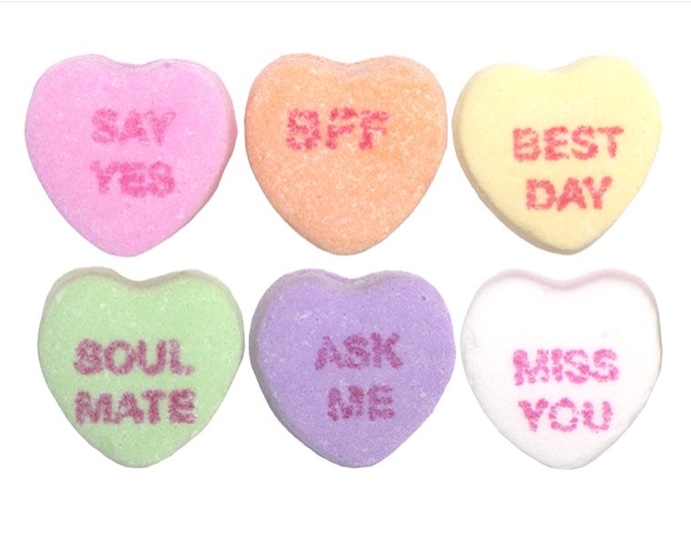Why we eat candy hearts on Valentine’s Day
The backstory of confectionary sweet talk
According to Huffington post, these conversation hearts were “originally called “motto hearts,” their precursor was a trendy fortune cookie-like treat sold during the Civil War called a “cockle,” which had printed phrases rolled up inside its scallop-shaped shell. Printing words directly on the candy was the bright idea of Daniel Chase, the brother of NECCO’s founder.” Photo from Google Images, edited by Fara Wiles.
February 10, 2019
Those chalky sweethearts who make their appearance every February are more than just a hefty serving of carbohydrates.
The hearts wearing red, playful typography sayings, such as “‘BE MINE” or “WISE GUY” may seem like nonsense chunks of sugar, but they actually have a historical background nothing short of “ICONIC.”
Candy hearts take a share in Valentine’s Day’s multi-billion dollar industry, with over 100,000 pounds of hearts printed each day in preparation. NECCO, now sold to Spangler Candy Co., was the leading and first ever candy-heart company founded by Oliver and Silas Chase. Oliver, a pharmacist, introduced America to the first candy-producing machine; a disk cutter for lozenges in 1847.
Originally, a lozenge intended for medical purposes, things turned sugar sweet with the industrialization of the machine in 1890. Finding them to be incredibly popular, the brothers focused directly on candy and founded Chase and Company, which later became NECCO in 1901.
In 1902, the shape of the lozenges shifted to hearts, resembling the candy that is known and loved today.
Daniel Chase, another brother of the same family, derived the sayings and the name, ‘motto hearts.’ Using vegetable dye and a stamp, he designed the phrases. Classic first-ever phrases printed on these hearts include “BE MINE,” “KISS ME,” and “BE TRUE.” For NECCO’s 150th anniversary, the company brought back a vintage message from the 20th Century: “THE ONE I LOVE.”
What makes these candies different from the rest of the Valentines treats is the “sweet” talk embellished in red.
“They’re good!” said sophomore Sydney Whetstone. “They taste yummy!”


